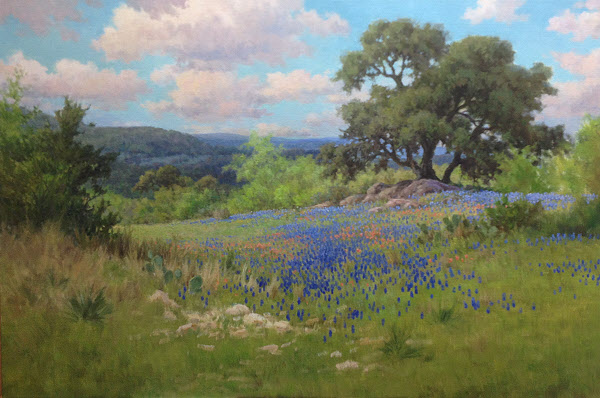Benefits of Painting Out of Your Comfort Zone
Are there benefits of painting out of your comfort zone, or should you just stick to the same subject matter that your accustomed to painting? True, most artists find a niche or genre in which they become known for. Jumping around from one diverse subject to another, doesn’t build a very cohesive body of work. Still, something can be said about pushing your limits.
This recently came about with a requested commission painting. My client, had six cats and the last had recently died. She wanted to remember them in a painting that contained a garden scene, a water feature and a few small details including a butterfly, a hummingbird and couple of other birds. This was no easy task for someone who is primarily a landscape artist. However, in accepting the challenge I realized a few things of which I’ll share.
- New Experiences: By painting out of your comfort zone, you open yourself up to new opportunities, experiences and of course challenges that can help you expand your painting knowledge. My experience with this commission tested my knowledge on perspective and design. Plus I had to do a lot of research on plants and flowers.
- Enhanced Creativity: When breaking away from the familiar, it forces your mind to become more adaptable and creative and keeps you engaged.
- Skill Acquisition: Challenging subject matter can help you acquire new skills and helps you grow as an artist. No matter how long you’ve been painting.
- Self-Discovery: While you might feel anxious about trying something new, which is natural, the rewards of going beyond your comfort zone can help you realize you can often succeed at doing more than what you thought.
Pushing My Limits
Here’s the commissioned painting. Below the image, is the process that lead to the final painting which was definitely pushing my limits and painting out of my comfort zone.
My client sent photos of her cats and of flowers she had in her own garden. However, that doesn’t make a painting. So, the first task was spending time searching images of cats in different poses and using the supplied photos of the actual cats to help with their markings. Also, research was required to identify the different types of plants, flowers, then coming up with a backyard setting.
Once all the reference material was gathered it was now time to sketch out ideas.
Getting Out of My Comfort Zone
In this sketch you can see a few notations of the cats names and where they would be placed. Although the fountain was nice it was bad composition. It pretty much dominated the whole scene. Plus, it was not a good focal area as it was too far to the right. So, it needed something that didn’t command as much attention. More research was on for other types of wall fountains. Ultimately one was found that was adjusted using other elements from others resources to make it “fit” into the painting. That change also required moving the cats around. Altering one thing can alter the whole. So, you can’t just arbitrarily move something without it effecting something else.
My client also provided details about some of her cats and that one of them liked drinking from fountains. So that had to be included. Another, was to be pawing at a butterfly. However, when you have any activity going on in your painting, your eye will go to that. So those two cats had to be together and near the water fountain.
So here was the revised sketch.
This image shows a few notations regarding the layout’s design. The arrangement follows some implied lines to lead the eye. The red dots indicated the locations for the cats and possible locations for the other little critters.
Next was finalizing the drawing on a prepared cradled panel using thinned paint.
Even at this stage, there were adjustments made while painting. Some included perspective adjustments and deciding what would be the final plants and flowers to include and which would compliment the scene without being distracting.
Again, here is the final painting. It was done under my Byron signature, which allows me to do other types of work that fall out of range of what I normally paint. My favorite part was painting the elephant ear plant! 🙂
So, if your someone who paints, try painting out of your comfort zone. When you do, you might be pleasantly surprised. By the way, my client loved the painting.































